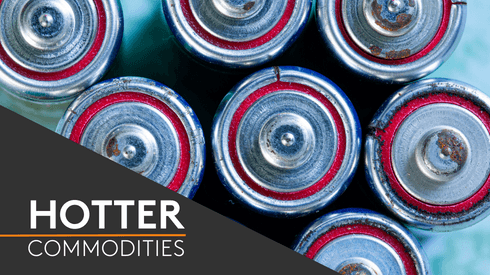The portfolio includes Glencore’s Aguillar mine in Argentina, the Los Quenuales mines in Peru, the Sinchi Wayra and Illapa operations in Bolivia as well as a stake in a Colombian exploration package, the sources who declined to be named because the negotiations are private said.
Glencore, which declined to comment to Fastmarkets questions through a spokesman, is the world’s largest miner of zinc and produces around 12% of the globe’s annual output in addition to holding equity-linked offtakes at major producers Trevali and Volcan.
At 112,000 tonnes of zinc in concentrate and 6.121 million oz of silver produced last year, the mines account for 9.6% and 18.7% of Glencore’s total zinc and silver production respectively.
The move to sell the portfolio comes at a time of strengthening prices for silver, which hit an eight-year high in February at over $30 per oz. Sources with knowledge of the offer told Fastmarkets the assets are being marketed as sales or as potential partnerships to investors.
The offer is also taking place following a generational shake-up in Glencore’s zinc and lead division last year, with Nick Popovic taking over from long-time trading head Daniel Maté and a team of asset managers including Popovic replacing Chris Eskdale in overseeing the company’s mines and smelters.
‘Silver belt’ package
There has been a boom in commodity prices since the start of 2021, with zinc futures on the London Metal Exchange hitting a two-and-a-half year high of $2,952 per tonne on Monday February 22. The three-month lead price traded at a 16-month high of $2,185 per tonne on the same day.
Despite this, the assets are being marketed to potential buyers as a package deal to invest in mines and projects across the mineral-rich Andes “silver belt”. Glencore’s 22% stake in Peruvian zinc miner Volcan and 33.75% holding in Antamina are not included in the offer.
While the assets have piqued interest among several investors, appetite to purchase all the mines together could be limited, with some highlighting political risk in Bolivia, where Glencore’s Illapa group is a joint venture with state-owned Comibol.
“They are good mines, but the requirement that it has to be a package could be a no-go,” a source with knowledge of the dealings said.
‘Tail’ asset cutback
Glencore’s senior management alluded to a potential rationalization of the company’s non-core asset base on a February earnings call with investors, coming after announcements that it would sell its Mopani copper mines to the government of Zambia and relinquish coal mining contracts through its Colombian subsidiary Prodeco.
“We want to reduce the amount of tail assets, the ones that take a large amount of management time and don’t contribute a lot to the profit,” outgoing chief executive officer Ivan Glasenberg told analysts.
In 2017 the company sold its stakes in two zinc mines, Rosh Pinah zinc mine in Namibia Burkina Faso’s Perkoa, to Trevali for a cash plus equity deal that also included life-of-mine offtakes.
“We’d obviously want to sell for value and do things that make sense, both in structural or ongoing commercial ties,” Glencore chief financial officer Steve Kalmin added during the call.




